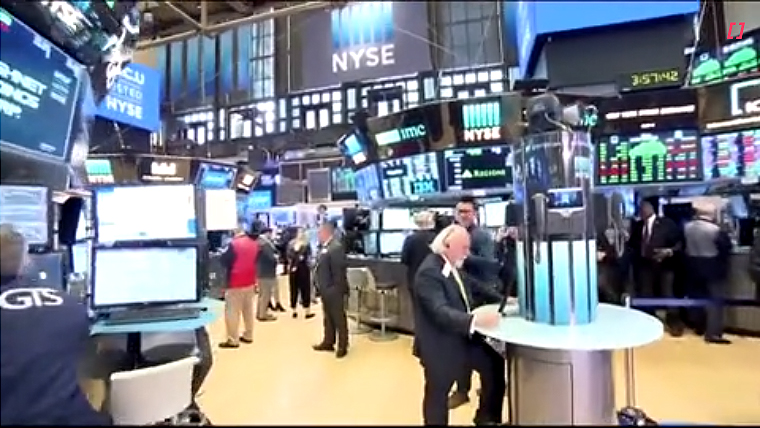
Stronger than expected US GDP data supported the soft-landing narrative, and US equities have consolidated after yesterday's tumble. US Treasury yields reversed course, with downward pressure earlier in the session, giving way to higher rates, with the result being small net movement. Currency markets have remained erratic, with the yen swinging around and NZD and AUD continuing to underperform and trading at fresh lows.
US GDP rose at an annualised 2.8% pace in Q2, stronger than the 2% consensus and up from 1.4% in Q1, supported by stronger personal consumption (2.3%), very strong business investment, and increased government spending on defence. Residential investment and net exports made negative contributions. The PCE deflator fell to a 2.3% pace, weaker than the 2.6% expected, while the core PCE deflator was two-tenths stronger than expected at 2.9%. This likely means April/May figures were revised higher, while the June figure, due tonight, might round up to 0.2% m/m rather than 0.1%.
In second-tier data, durable goods orders slumped 6.6% m/m in June, driven by aircraft orders, but excluding transportation they were stronger than expected at 0.5% m/m. Jobless claims data are difficult to interpret at this time of year but for the record they fell 10k to 235k, slightly lower than consensus.
The stronger GDP figures reduced recession fears regarding the US economy and supported the soft-landing narrative, without necessarily changing views that the Fed will embark on an easing cycle – although the stronger figures support waiting until September rather than making the case for an immediate cut next week.
US Treasury yields were heading lower into the release, but reversed course thereafter. The 2-year rate reached an overnight low of 4.34% before rising 10bps to 4.44%. The 10-year rate traded down to 4.19% and currently sits at 4.25%, little changed from the NZ close.
The soft-landing narrative supported a turnaround in US equity market sentiment, with weakness in early trading giving way to a recovery, although as we go to print the S&P500 is flat. The ongoing rotation into smaller caps stocks remains in full force, with the Russell 200 index up around 2%.
In the currency market it has been a day of further weakness in the NZD and AUD. We have been closely monitoring the Bloomberg industrial metals index and that has fallen for a ninth consecutive day, down 9% over that period and down 19% from its peak in May. This has correlated well with the slump in the NZD over that time, with weaker commodity prices largely driven by softer demand and it is also fair to say that the run-up through May was unjustified. We can also add in the unwind of yen-short positions as a factor dragging down the NZD and AUD.
Weak growth momentum in China is also in the mix and yesterday the PBoC surprised the market with a 20bps cut to the 1-year medium-term lending facility rate, double the usual 10bps movement and the timing different, coming well after the usual mid-month schedule. The move follows 10bps reductions in other key policy rates. The decision shows an increased urgency by China to provide some support to the economy, while opportunistically timing the move to reduce undesired weakness in the yuan – the recent strength of the JPY providing a good window to move the policy rate.
While the yuan actually strengthened after the move, the NZD and AUD remained under selling pressure. The NZD fell to a fresh low of 0.5883 overnight and is trading only slightly higher at present. The relative strength index of 25 suggests that the currency has reached an oversold level, although technically the support level near the April low around 0.5850 is on the watchlist. The AUD fell to 0.6515 and has recovered to 0.6540. There has been significant movement in the cross as positions get adjusted, with NZD/AUD strangely recovering to 0.9060 last night, before retreating back down to 0.90.
The unwinding of short yen positions saw USD/JPY fall to just below 152, but it has rebounded, most of the move coming after the US GDP release, to just under 154. NZD/JPY traded down to 89.8 and has recovered to 90.6.
Overnight movements in EUR and GBP have been small by comparison, with EUR slightly stronger at 1.0850 and GBP modestly weaker at 1.2860. Germany’s IFO business survey was weaker across the board and with figures coming in below consensus, albeit consistent with the weaker reading of the PMI data released a day earlier, limiting any market reaction. The head of the IFO noted that the outlook for Germany is rather bleak, with business confidence deteriorating and a lot of pessimism regarding the coming months.
In the domestic rates market, downward pressure on short-term swap rates remained, with the 2-year rate down 4bps to a fresh low of 4.22%, while the 10-year rate was steady at 4.15%. There was some fear about how the government’s weekly bond tender would go, but in the event there was enough investor interest, with bid-cover ratios of 2-2½ for the two lines on offer and priced a basis point under prevailing mids. On the day there wasn’t much change in shorter-dated NZGB yields, while the 10-year rate closed up 2bps at 4.43%, reflecting some cross market underperformance for a change.
In the day ahead, NZ consumer confidence and Tokyo CPI data are released. Tonight, in the US personal income and spending data along with the June month PCE deflator is released, with market reaction unlikely to the extent that the quarterly figure is already known.




We welcome your comments below. If you are not already registered, please register to comment.
Remember we welcome robust, respectful and insightful debate. We don't welcome abusive or defamatory comments and will de-register those repeatedly making such comments. Our current comment policy is here.